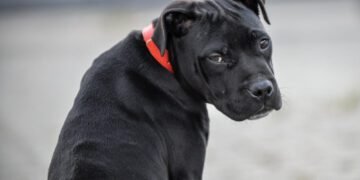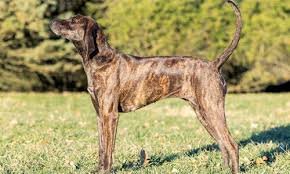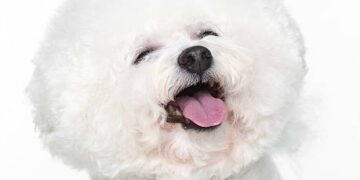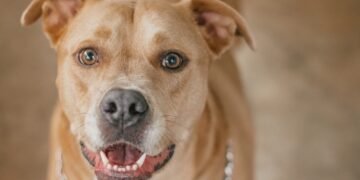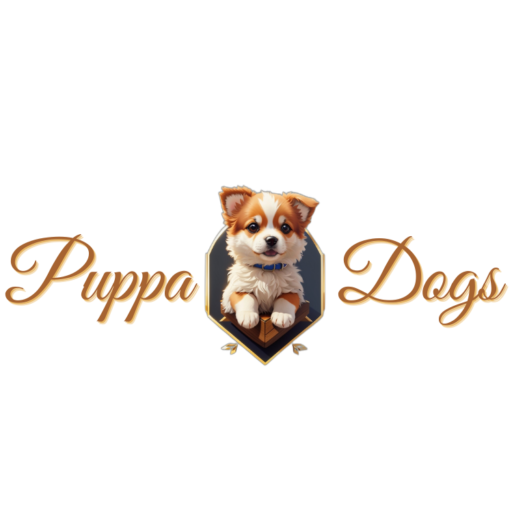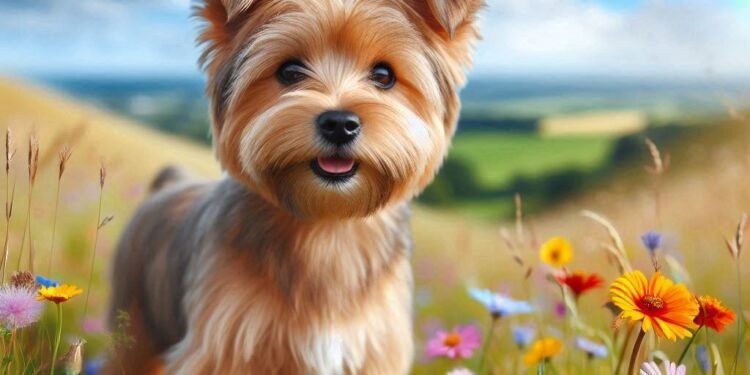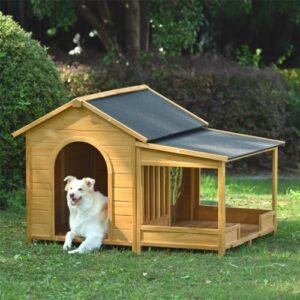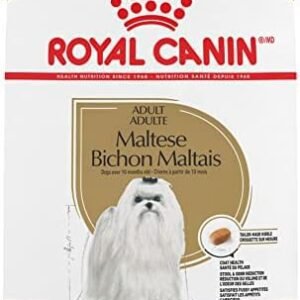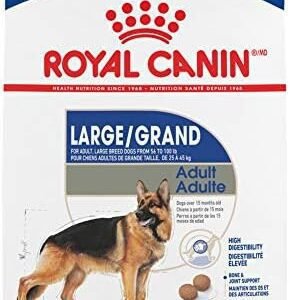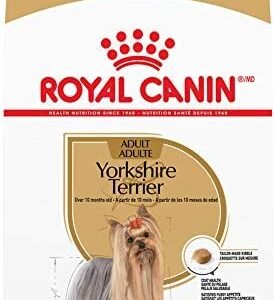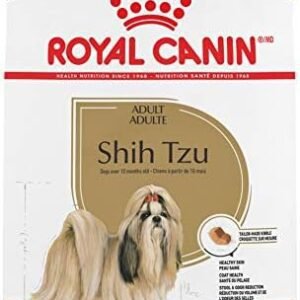The Norfolk Terrier is an extraordinary breed known for its captivating charm and distinctive characteristics. If you’re considering bringing a Norfolk Terrier into your life, it’s essential to understand what sets this breed apart and how to match it with your lifestyle. In this comprehensive guide, we will delve into the unique features of the Norfolk Terrier, highlighting their characteristics and what makes them a remarkable choice for dog enthusiasts.
Norfolk Terriers are not just any breed; they have a rich history and an array of attributes that make them stand out among the many dog breeds. Their delightful temperament, manageable size, and charming appearance are just a few of the reasons why they’ve earned a special place in the hearts of dog lovers.
Table of Contents
Selecting the Right Breed
Choosing the right dog breed is a crucial decision. Different breeds come with unique characteristics, temperaments, and care requirements. To ensure a harmonious and fulfilling relationship with your furry companion, you must choose a breed that matches your lifestyle and preferences.
Let’s start by providing essential information about the Norfolk Terrier breed in a convenient table format:
| Field | Norfolk Terrier Information |
|---|---|
| Height | Not known |
| Weight | Not known |
| Life Span | Not known |
| Good with | Families, singles, active individuals |
| Temperament | Alert, fearless, affectionate, loyal |
| Intelligence | High |
| Shedding Amount | Low |
| Grooming | Moderate |
| Exercise Needs | Moderate |
| Energy Level | Moderate |
| Barking Level | Moderate |
| Drool Amount | Low |
| Coat Length/Texture | Straight, wiry |
| Colors | Red, wheaten, black and tan |
| Patterns | None |
Understanding these attributes is vital when considering a Norfolk Terrier as your next pet. This breed’s unique characteristics, including their temperament, moderate exercise needs, and low shedding, make them suitable for a variety of lifestyles.
Breed History and Origin
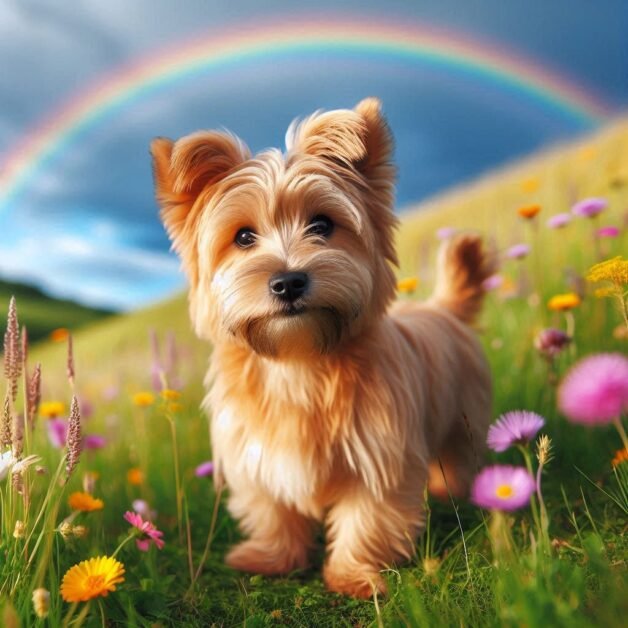
Exploring Their Roots
- English Roots: The Norfolk Terrier originated in the eastern English county of Norfolk, bred as a working terrier to manage vermin on farms and assist hunters.
- Role as a Vermin Hunter: Its primary job was to hunt and catch rats, and its small, agile frame made it perfect for navigating tight spaces to reach its prey.
- Early Interbreeding: In its early development, the Norfolk Terrier was interbred with other terrier breeds to improve its hunting ability and skills.
- Selective Breeding: By the late 19th century, selective breeding began to refine the Norfolk Terrier’s traits, leading to the breed we recognize today.
- Shared Ancestry with Norwich Terrier: The Norfolk Terrier shares a common ancestry with the Norwich Terrier. Both breeds developed similarly but had one key difference—ear carriage.
- Ear Distinction: Originally, Norfolk Terriers had prick ears like Norwich Terriers. Over time, a variety with dropped or folded ears emerged, leading to a distinct separation.
- Separate Breeds: Due to the difference in ear carriage, the Norfolk Terrier (with folded ears) and the Norwich Terrier (with prick ears) became recognized as separate breeds, though they still share many common traits.
Notable Traits
The historical development of the Norfolk Terrier is marked by several notable and distinctive traits:
Relevance of Origin
Understanding the origin of the Norfolk Terrier is not just a journey into history but also a key to comprehending their characteristics and behavior today. The breed’s historical role as a vermin hunter has left an indelible mark on their temperament and instincts.
The Norfolk Terrier’s terrier tenacity remains a hallmark of its personality. These dogs are spirited, alert, and fearless, traits that made them excellent hunters in their early days. Even today, Norfolk Terriers retain their tenacity, which is balanced by their affectionate and loyal nature.
The breed’s compact size and ability to navigate tight spaces were crucial to their role as working terriers. Today, these traits make them adaptable and well-suited to various living environments, from city apartments to suburban homes with small yards. Their distinctive ears serve as a visual reminder of their unique heritage, adding to their charm.
Understanding the Norfolk Terrier Breed’s Traits
Physical Characteristics
The Norfolk Terrier boasts a distinctive and charming appearance. To understand this breed fully, we must delve into their physical attributes. Here’s what you need to know about the Norfolk Terrier’s physical characteristics:
- Size: While specific height and weight measurements are not widely documented, Norfolk Terriers are generally considered a small breed. They typically stand about 9 to 10 inches (23 to 25 cm) at the shoulder and weigh around 11 to 12 pounds (5 to 5.5 kg). Their compact size is one of their endearing features.
- Coat Type: Norfolk Terriers possess a double coat. The outer coat is wiry and straight, providing protection from the elements. The undercoat is soft and insulating. Their fur is weather-resistant, which was a valuable trait for their historical role as working terriers.
- Color: Norfolk Terriers come in several coat colors, including red, wheaten, black and tan. These color variations contribute to their visual appeal.
- Distinguishing Features: One of the most distinctive features of Norfolk Terriers is their ears. Unlike their Norwich Terrier counterparts, Norfolk Terriers have dropped or folded ears. This unique characteristic adds to their charm and sets them apart in appearance.
Temperament Overview
Norfolk Terriers are known for their engaging temperament and are often considered delightful family pets. Here’s an overview of their temperament, including insights into their suitability as family pets and any unique personality traits:
Common Behavioral Traits
Understanding the common behavioral traits of Norfolk Terriers is essential for prospective owners. These traits, both positive and challenging, offer valuable insights into what to expect when sharing your life with this breed:
- Affectionate: Norfolk Terriers are known for their affectionate nature. They thrive on human companionship and enjoy being part of family activities. They often form strong bonds with their owners.
- Curious: These terriers have an inquisitive and curious disposition. They love to explore their surroundings and are always eager for an adventure. Providing mental stimulation through toys and interactive play is essential to keep them engaged
- Independent Thinkers: Norfolk Terriers are intelligent dogs, but they can also be independent thinkers. This independence, coupled with their terrier tenacity, may lead to occasional stubbornness. Consistent training and positive reinforcement are key to managing their behavior
- Alertness: Their alert and fearless nature, inherited from their working terrier ancestry, makes them excellent watchdogs. They are quick to alert their owners to any perceived threats or intruders.
- Digging Tendency: Due to their history as burrow hunters, Norfolk Terriers may have a propensity for digging. Providing a designated digging area in your yard can help channel this instinct.
Popularity and Recognition

Current Popularity
- Modest Popularity: The Norfolk Terrier enjoys a dedicated following but is not as widely recognized as some other dog breeds.
- Growing Interest in Small Breeds: There has been an increasing interest in small dog breeds, particularly those well-suited for urban living and adaptable to various lifestyles.
- Ideal Size and Adaptability: Norfolk Terriers fit this niche due to their small size, moderate exercise needs, and ability to adapt to different living environments, making them popular as companion animals.
- Active and Playful Nature: People leading active lives, including singles, couples, or families, appreciate the Norfolk Terrier’s playful, alert, and affectionate nature.
- Family Compatibility: The Norfolk Terrier is compatible with children, making it a great choice for families looking for a small, sociable, and loving canine companion.
Breed Recognition
The Norfolk Terrier is officially recognized by several prominent kennel clubs and breed organizations, which adds to its credibility and desirability as a purebred dog. Notable kennel clubs that recognize the Norfolk Terrier breed include:
- The American Kennel Club (AKC): The Norfolk Terrier has been recognized by the AKC since the early 1970s. The AKC is one of the most well-known and respected kennel clubs globally and sets standards for breed characteristics and participation in various dog-related events.
- The United Kennel Club (UKC): The UKC also recognizes the Norfolk Terrier as a distinct breed and includes it in various events and competitions.
- The Kennel Club (UK): In the United Kingdom, where the breed originated, the Kennel Club officially recognizes the Norfolk Terrier. This recognition is especially significant due to the breed’s historical ties to the Norfolk region.
Notable Breed Varieties
The Norfolk Terrier is a breed with a singular standard recognized by kennel clubs, but it has a close relative that shares a common history and many traits. The Norwich Terrier is a variety of terrier that was once very similar to the Norfolk Terrier. The primary distinction between the two lies in their ears:
- Norfolk Terrier: Norfolk Terriers are characterized by their dropped or folded ears. This unique feature gives them a distinct and charming appearance. They have a wiry, straight coat and are known for their affectionate and alert nature.
- Norwich Terrier: Norwich Terriers, on the other hand, have erect, prick ears. These two breeds share a common ancestry and were once considered the same breed. However, their ear carriage was the key factor that led to their separation into two distinct breeds. Norwich Terriers are also lively and affectionate.
While both breeds have their distinct traits, the choice between them often comes down to personal preference for ear type, as their temperaments and physical characteristics are quite similar. Both breeds make excellent companions and are cherished for their engaging personalities.
Health Considerations and Care
Ensuring the health and well-being of your Norfolk Terrier is paramount to providing them with a happy and fulfilling life. In this section, we will discuss common health issues that the breed may be prone to and provide insights into their average lifespan and tips for promoting longevity.
Common Health Issue
While Norfolk Terriers are generally considered a healthy breed, like all dogs, they can be prone to certain health issues. Being aware of these potential problems and taking proactive measures can help maintain your Norfolk Terrier’s health. Some common health issues that Norfolk Terriers may face include:
| Health Condition | Description | Prevention and Management |
|---|---|---|
| Patellar Luxation | The kneecap dislocates or moves out of position, causing lameness and discomfort. | Regular vet check-ups; surgery may be required for severe cases. |
| Dental Issues | Prone to gum disease and tooth decay due to small breed size. | Regular brushing of teeth and professional dental cleanings. |
| Allergies | Allergies to environmental factors (e.g., pollen) or certain foods, causing skin irritation. | Identifying allergens and avoiding them; using prescribed treatments. |
| Hip Dysplasia | Hereditary condition causing joint problems and discomfort. | Maintaining a healthy weight; providing joint supplements and exercise. |
| Eye Conditions | Susceptible to cataracts and glaucoma, which can impair vision. | Regular eye examinations to detect and manage conditions early. |
| Tracheal Collapse | Weakening of the trachea, leading to coughing and breathing difficulties. | Avoiding neck strain (e.g., using harnesses); vet-prescribed treatments. |
| Heart Conditions | Susceptible to heart issues, such as mitral valve disease. | Regular vet check-ups, early detection, and management through medication. |
It’s important to work closely with a veterinarian who is familiar with the breed and can provide guidance on preventive care and early detection of health problems. Regular check-ups, vaccinations, and a balanced diet are essential to maintaining your Norfolk Terrier’s well-being.
Lifespan and Longevity
The average lifespan of a Norfolk Terrier typically ranges from 12 to 15 years, making them a long-lived breed. To help your Norfolk Terrier enjoy a longer and healthier life, consider the following tips:
- Regular Veterinary Check-ups: Schedule routine check-ups with your veterinarian to monitor your dog’s health and address any emerging issues promptly.
- Healthy Diet: Provide a well-balanced and nutritious diet appropriate for your dog’s age and activity level. Avoid overfeeding to prevent obesity, which can lead to health problems.
- Exercise: Norfolk Terriers need regular exercise to stay fit and mentally stimulated. Daily walks and playtime are essential. Mental stimulation through interactive toys and puzzles is also beneficial.
- Dental Care: Maintain good dental hygiene by brushing your Norfolk Terrier’s teeth regularly and offering dental chews or toys to help keep their teeth clean.
- Grooming: Regular grooming, including brushing their wiry coat, is necessary to prevent matting and to check for any skin issues or parasites.
- Parasite Control: Protect your dog from fleas, ticks, and internal parasites by using veterinarian-recommended preventive treatments.
- Safety: Ensure the safety of your Norfolk Terrier by using a leash when outside, keeping them away from toxic substances, and providing a secure environment at home
- Socialization: Early socialization is crucial to help your Norfolk Terrier develop good behavior and interact well with other dogs and people.
- Mental Stimulation: These intelligent dogs benefit from mental stimulation through puzzles, obedience training, and interactive play.
- Love and Affection: Lastly, shower your Norfolk Terrier with love and attention. Their affectionate nature thrives on human companionship, and forming a strong bond with their owners contributes to their overall well-being.
By following these tips and providing attentive care, you can help ensure that your Norfolk Terrier enjoys a long, healthy, and happy life as your cherished companion.
Exercise and Activity Recommendations
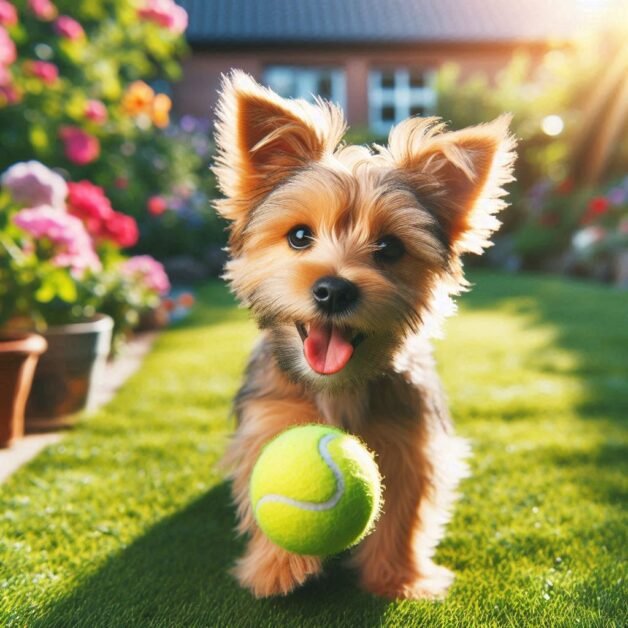
Ensuring that your Norfolk Terrier gets the right amount of exercise and mental stimulation is essential for their physical health and mental well-being. In this section, we will provide a detailed exercise plan, including the types of exercise, duration, and frequency, tailored to meet the needs of this spirited breed.
Understanding Norfolk Terrier Exercise Needs
Norfolk Terriers are a small breed with moderate exercise requirements. While they don’t need the same level of exercise as some high-energy breeds, they still benefit from daily physical activity and mental stimulation. Here are some key considerations when planning your Norfolk Terrier’s exercise routine:
- Moderate Exercise: Norfolk Terriers are not couch potatoes, but they are not overly active either. They enjoy daily walks and playtime, which helps keep them fit and mentally engaged.
- Playful Nature: These terriers have a playful disposition and enjoy interactive play with their owners. Games like fetch and tug-of-war can be a great way to burn off some of their energy.
- Mental Stimulation: In addition to physical exercise, Norfolk Terriers thrive on mental stimulation. Puzzle toys and obedience training can help keep their intelligent minds sharp.
- Adaptability: Norfolk Terriers are adaptable to different living environments. Whether you live in a city apartment or a suburban home, you can tailor their exercise routine to suit your surroundings.
- Social Interaction: These dogs enjoy socializing with other dogs, so occasional playdates or visits to the dog park can be a great way to provide them with mental and physical exercise.
Daily Walks
- Duration: A daily walk for a Norfolk Terrier should ideally last between 20 to 30 minutes. This is sufficient to meet their exercise needs and provide them with an opportunity to explore and sniff around.
- Frequency: Norfolk Terriers should be taken for a walk every day. Consistency in daily walks helps maintain their physical health and prevents them from becoming overweight.
Playtime and Interactive Activities
- Duration: Engage your Norfolk Terrier in interactive play sessions for about 15 to 20 minutes, several times a day. Short but frequent play sessions help prevent them from becoming bored.
- Frequency: Aim for at least two to three play sessions daily. These can include games like fetch, tug-of-war, and hide-and-seek.
Mental Stimulation
- Duration: Mental stimulation activities can vary in duration. Training sessions can be as short as 10 to 15 minutes. Puzzle toys and treat-dispensing toys can keep them engaged for longer periods
- Frequency: Integrate mental stimulation activities into your Norfolk Terrier’s daily routine. A short training session or some time with a puzzle toy can be included in the morning and evening.
Socialization
- Duration: Socialization activities can be as long as your Norfolk Terrier enjoys them. This could be a visit to the dog park or playdates with other dogs
- Frequency: Plan for socialization activities once or twice a week. Norfolk Terriers are generally sociable with other dogs and enjoy the company of their furry friends
Remember that the key to a successful exercise routine for Norfolk Terriers is consistency. They thrive on routine, and regular exercise and mental stimulation help prevent behavioral issues and ensure they remain healthy and happy.
Breed-Specific Exercise Considerations
Norfolk Terriers don’t have any specific breed-related exercise needs, but their adaptability makes them suitable for various activities. However, they have a history as working terriers, and their love for digging may be channeled into activities like digging in a designated area of your yard or garden. This can provide both exercise and mental stimulation for them.
Additionally, some Norfolk Terriers enjoy agility training. While they might not be as agile as some other breeds, they can still have fun navigating an agility course. It’s a great way to challenge their minds and bodies while strengthening your bond through training.
If you live near water and your Norfolk Terrier enjoys it, swimming can be a good exercise option. Swimming is a low-impact exercise that is easy on their joints, making it a suitable choice for older Norfolk Terriers or those with joint issues.
Remember to adjust the exercise routine to your Norfolk Terrier’s age, health, and individual preferences. Senior Norfolk Terriers may require less strenuous exercise, while younger dogs might need more playtime and mental stimulation.
Nutrition and Feeding Guidelines for Norfolk Terriers
Proper nutrition is essential to keep your Norfolk Terrier healthy and happy. This section will provide you with specific dietary recommendations based on the breed’s size, age, and activity level. Additionally, we will mention any dietary restrictions or allergies commonly associated with Norfolk Terriers and provide insights into feeding schedules and portion control.
Dietary Recommendations by Age
Feeding a Norfolk Terrier should take into account their age and life stage. Here are some dietary recommendations for Norfolk Terriers at different ages:
- Puppies (Up to 1 Year): Norfolk Terrier puppies require a diet that supports their growth and development. Look for high-quality puppy food that specifies it’s suitable for small breeds. These foods typically have a higher protein and fat content to meet the energy needs of active puppies. Feeding them three to four small meals a day can help maintain their energy levels and prevent hypoglycemia, a condition small breeds can be prone to.
- Adults (1 to 7 Years): Adult Norfolk Terriers need a balanced diet that maintains their overall health. You can transition to adult dog food formulated for small breeds. Be mindful of portion control to prevent overfeeding and obesity. Typically, two meals a day are suitable for adult Norfolk Terriers.
- Seniors (7 Years and Older): As Norfolk Terriers age, their metabolism may slow down, and they may become less active. Consider transitioning to a senior dog food that meets their changing nutritional needs. Two smaller meals a day can help with digestion and keep them at a healthy weight.
Dietary Restrictions and Allergies
Norfolk Terriers are not known for specific food allergies, but like any dog, they can develop sensitivities to certain ingredients. To ensure your Norfolk Terrier’s diet is well-tolerated, look for high-quality dog food that lists meat as the primary ingredient and avoids fillers, artificial additives, and common allergens.
It’s always a good practice to monitor your dog for any signs of allergies or digestive issues, such as itching, gastrointestinal upset, or changes in bowel movements. If you suspect your Norfolk Terrier has food allergies, consult your veterinarian to discuss dietary changes or hypoallergenic food options.
Feeding Schedule and Portion Control
Establishing a regular feeding schedule and practicing portion control is crucial to maintaining your Norfolk Terrier’s health. Here are some guidelines for feeding schedules and portion control:
- Meal Times: Feed your Norfolk Terrier at consistent times each day. Typically, two meals a day are appropriate for adult dogs. Puppies may require more frequent meals. Stick to a schedule that aligns with your dog’s daily routine.
- Portion Sizes: The appropriate portion size depends on your dog’s age, size, and activity level. Follow the feeding guidelines provided on the dog food packaging as a starting point. However, it’s important to monitor your dog’s weight and adjust portion sizes accordingly. Avoid overfeeding, as Norfolk Terriers can be prone to obesity.
- Avoid Free Feeding: Refrain from leaving food out for your dog to eat at their leisure. Free feeding can lead to overeating and weight gain. By offering measured portions at specific meal times, you have better control over their diet.
- Fresh Water: Always provide fresh, clean water for your Norfolk Terrier. Proper hydration is essential for their overall health and well-being.
- Treats and Snacks: Limit the number of treats and snacks you offer your Norfolk Terrier. While treats can be used for training and rewards, excessive treat consumption can lead to weight issues. Choose healthy and appropriately-sized treats.
- Consult Your Veterinarian: If you’re unsure about the right portion sizes or have questions about your Norfolk Terrier’s specific dietary needs, consult your veterinarian. They can provide personalized recommendations based on your dog’s age, weight, and health status.
- Monitor Weight: Regularly monitor your Norfolk Terrier’s weight to ensure they maintain a healthy body condition. Adjust portion sizes as needed to prevent underweight or overweight issues.
Remember that Norfolk Terriers have individual preferences and dietary needs. It’s important to observe your dog’s response to their food, adjust their diet as necessary, and consult your veterinarian for guidance on maintaining their optimal health through nutrition.
Personal Stories and Testimonials
To provide you with a more holistic perspective on what it’s like to own a Norfolk Terrier, we’ve gathered some real-life stories and testimonials from dog owners who have shared their experiences, challenges, and joys of having this spirited and affectionate breed as part of their family.
Testimonial 1: A Lively Companion
“Our Norfolk Terrier, Max, has been the perfect addition to our family. His lively and playful nature brings so much joy to our home. He’s a little bundle of energy and has an incredible ability to make us smile. He’s great with our kids and has become a beloved member of our family. We cherish every moment we spend with him.” – Sarah D.
Testimonial 2: A Terrier Full of Personality
“Our Norfolk Terrier, Bella, is an absolute character. She’s incredibly curious and always wants to be in the middle of the action. She’s got a feisty side, but that’s what makes her so endearing. Her adaptability means she’s just as content in our small apartment as she is in our backyard. We can’t imagine life without her.” – Mark T.
Testimonial 3: A Fearless and Alert Companion
“We were looking for a small dog with a big personality, and our Norfolk Terrier, Charlie, delivered just that. He’s fearless and alert, which makes him an excellent watchdog. His barking may be a bit much at times, but we appreciate that he’s looking out for us. He’s also quite affectionate, and we love the way he’s always excited to see us.” – Emily R.
These testimonials reflect the unique and captivating qualities of Norfolk Terriers. They are cherished companions that bring boundless joy to the lives of their owners, with their lively nature, playful personality, and unwavering loyalty.
Cost of Owning a Norfolk Terrier
Owning a dog, regardless of the breed, comes with a range of expenses. It’s important to be aware of these costs and budget accordingly to provide the best care for your Norfolk Terrier. Let’s break down the expenses associated with owning a Norfolk Terrier, including both upfront costs and ongoing expenses.
Upfront Costs
Ongoing Expenses
- Food: The cost of food for a Norfolk Terrier depends on the quality of the food, but a good estimate is about $20 to $30 per month for high-quality kibble.
- Regular Veterinary Care: Annual check-ups, vaccinations, and preventive care can add up to $200 to $400 per year.
- Dental Care: Budget for dental care, including dental chews and professional cleanings, which can range from $100 to $300 per year.
- Grooming: If you’re not grooming your Norfolk Terrier at home, you may need to budget for professional grooming, which can cost approximately $50 to $75 every few months.
- Training and Socialization: Training classes and socialization activities may incur costs of $100 to $300 per year.
- Medications and Preventives: Budget for flea and tick preventives, heartworm medication, and any necessary medications, which can amount to $100 to $200 per year.
- Insurance: Pet insurance can be a wise investment to cover unexpected medical expenses and typically costs around $30 to $50 per month.
- Pet Sitter or Boarding: If you travel, you might need to budget for pet sitting or boarding services, which can range from $25 to $50 per day.
- Toys and Enrichment: Dogs need mental stimulation and new toys, which can cost about $10 to $20 per month.
- Emergency Fund: It’s advisable to have an emergency fund for unexpected expenses, which you can contribute to monthly.
It’s important to remember that these costs are estimates, and the actual expenses may vary based on your location, your dog’s specific needs, and your preferences for products and services. Responsible dog ownership requires a financial commitment, and planning for these expenses ensures that your Norfolk Terrier receives the best care throughout their life.
Parting Thoughts and Resources
As you embark on the journey of welcoming a Norfolk Terrier into your life, it’s essential to remember that this breed, with its lively personality, will become a cherished member of your family. Their adaptability, playful nature, and unwavering loyalty make them a delightful choice for various households.
To ensure the well-being of your Norfolk Terrier, be prepared for their exercise needs, grooming requirements, and potential health considerations. Stay committed to providing them with love, care, and a nurturing environment, and you’ll undoubtedly be rewarded with the boundless affection and companionship of this spirited breed.
Remember that responsible dog ownership involves continuous learning and seeking guidance when needed. Whether you’re a first-time dog owner or an experienced one, there are valuable resources available to help you along the way. Some of these resources include:
- Local Dog Clubs: Joining a local dog club or breed-specific club can connect you with experienced Norfolk Terrier owners and provide valuable insights and support.
- Books and Websites: There are numerous books and websites dedicated to dog care and training, many of which offer breed-specific information
- Veterinarians: Your veterinarian is an invaluable resource for all matters related to your Norfolk Terrier’s health and well-being. Don’t hesitate to ask questions and seek advice
- Trainers and Behaviorists: If you encounter training or behavioral challenges, consider enlisting the help of professional trainers or behaviorists who are experienced in working with terrier breeds
- Online Forums and Communities: There are online forums and social media groups where Norfolk Terrier owners share their experiences, ask questions, and offer support
- Breeder or Rescue Contacts: The breeder or rescue organization where you acquired your Norfolk Terrier can be a source of guidance and assistance.
By taking the time to learn about the breed and its specific needs, you’re well on your way to providing a loving and caring home for your Norfolk Terrier. We hope this comprehensive guide has equipped you with the knowledge and insights needed to ensure a fulfilling and joyous life with your spirited and affectionate Norfolk Terrier.
Grooming and Care for Norfolk Terriers

Grooming and care for Norfolk Terriers are essential to maintain their distinctive appearance and keep them healthy and happy. This section provides comprehensive guidance on grooming, hygiene, and overall care for your Norfolk Terrier. We’ll cover their unique grooming needs, recommended grooming tools, dental care, exercise requirements, and essential accessories to ensure their well-being.
Coat Care and Grooming
Norfolk Terriers have a unique double coat consisting of a wiry, straight outer coat and a soft, insulating undercoat. Proper coat care is essential to keep them looking their best and protect their skin. Here are some grooming tips specific to Norfolk Terriers
| Grooming Task | Description | Frequency |
|---|---|---|
| Brushing | Use a slicker or pin brush to remove loose hair and prevent matting. | Once or twice a week |
| Stripping | Plucking out dead hairs to maintain coat texture; often done by a groomer. | As needed, consult a groomer |
| Bathing | Use a mild dog shampoo for bathing when they get dirty. | Every 2 to 3 months |
| Ear Care | Check and clean ears to prevent wax buildup or infections. | Regularly, as needed |
| Nail Trimming | Trim nails to prevent overgrowth and discomfort. | Every 4-6 weeks |
| Eye Care | Check for discharge or redness, and clean gently if needed. | As needed, regularly inspect |
| Teeth Cleaning | Brush teeth using a dog-specific toothbrush and toothpaste to maintain oral health. | Several times a week |
Dental Care
Dental care is especially important for Norfolk Terriers. Small dog breeds like them are more prone to dental issues. Here are some dental care tips:
Regular Brushing: Brush their teeth several times a week with a dog-specific toothbrush and toothpaste. This helps prevent plaque and tartar buildup.
Dental Chews: Offer dental chews or toys designed to promote oral health. These can help reduce tartar and massage their gums.
Professional Cleanings: Schedule professional dental cleanings with your veterinarian as recommended. They will thoroughly clean your Norfolk Terrier’s teeth and address any dental concerns.
Accessories and Care Products
Certain accessories and care products can make grooming and care for Norfolk Terriers more convenient and effective. Here are some recommended items:
- Slicker Brush or Pin Brush: These brushes are ideal for grooming their wiry coat.
- Stripping Tools: If you’re experienced in coat stripping, specific tools like stripping knives or fingers can be useful.
- Dog Shampoo: Choose a mild dog shampoo to avoid skin irritation.
- Ear Cleaner: A veterinarian-recommended ear cleaner is essential for ear hygiene.
- Toothbrush and Toothpaste: Invest in a dog-specific toothbrush and toothpaste for regular teeth cleaning.
- Dental Chews and Toys: Dental chews and toys designed to promote oral health can be beneficial.
- Leash and Collar/Harness: Ensure your Norfolk Terrier has a secure leash, collar, or harness for walks.
- ID Tag: A properly engraved ID tag with your contact information can help identify your dog if they get lost.
- Dog Bed: Provide a comfortable and appropriate-sized bed for your Norfolk Terrier’s rest.
- Toys and Puzzle Toys: Engage your dog’s mind with toys and puzzle toys for mental stimulation.
By following these grooming and care recommendations and providing the necessary accessories, you can ensure that your Norfolk Terrier remains in excellent health, looks their best, and enjoys a happy and fulfilling life as a cherished member of your family.
Choosing and Adopting a Norfolk Terrier Dog Breed
Reasons for Adoption
Adopting a Norfolk Terrier can be a deeply rewarding experience for dog enthusiasts. There are numerous benefits to choosing adoption, not only for you as a prospective dog owner but also for the dogs in need of loving homes. Here are some compelling reasons to consider adopting a Norfolk Terrier:
- Rescue and Second Chances: When you adopt a Norfolk Terrier from a rescue organization or shelter, you are providing a second chance at a happy and fulfilling life. Many rescue dogs have faced challenging circumstances, and adoption offers them hope and security.
- Saving Lives: By adopting a dog, you are saving a life. Shelters and rescue organizations often have limited resources, and each adoption frees up space and resources for other dogs in need.
- Health and Behavior Assessment: Most rescue organizations thoroughly assess the health and behavior of the dogs in their care. This means you can adopt a Norfolk Terrier with a good understanding of their personality and any special needs.
- Companionship: Norfolk Terriers are known for their affectionate nature, and they can form strong bonds with their owners. Adopting one provides you with a loyal and loving companion.
- Avoiding Puppy Mills: Adopting from reputable rescue organizations ensures that you are not supporting unethical puppy mills or backyard breeders. These organizations prioritize the welfare of dogs and adhere to responsible breeding practices.
- Variety of Ages: In rescue organizations, you can find Norfolk Terriers of various ages, from puppies to seniors. This allows you to choose a dog that suits your lifestyle and preferences.
Research and Preparation
Before adopting a Norfolk Terrier or any dog breed, it’s essential to invest time in research and preparation. Here’s what you should consider:
- Understand the Breed: Research the specific needs and characteristics of the Norfolk Terrier breed. Understanding their temperament, exercise requirements, grooming needs, and potential health issues is crucial.
- Financial Responsibilities: Owning a dog comes with financial responsibilities. Be prepared for the costs associated with adoption fees, vaccinations, spaying/neutering, grooming, food, regular veterinary care, and unexpected medical expenses.
- Lifestyle Compatibility: Assess whether the Norfolk Terrier’s temperament and energy level match your lifestyle. Norfolk Terriers are adaptable but still require exercise and mental stimulation.
- Training and Socialization: Be prepared to invest time in training and socializing your Norfolk Terrier. Consistent and positive reinforcement training is essential to ensure they become well-behaved and obedient companions.
- Long-Term Commitment: Remember that adopting a dog is a long-term commitment. Norfolk Terriers have a lifespan of 12 to 15 years on average. Ensure that you are ready for this commitment and can provide a stable and loving home throughout their life.
Adoption Process
The adoption process for Norfolk Terriers typically involves the following steps:
- Research and Find Reputable Organizations: Start by researching and identifying reputable rescue organizations, shelters, or breed-specific clubs that specialize in Norfolk Terriers. Look for organizations with a good track record of caring for and rehoming dogs.
- Application: Complete an adoption application provided by the organization. This application typically includes questions about your living situation, experience with dogs, and your reasons for adopting.
- Home Visit: Some organizations may conduct a home visit to ensure that your living environment is suitable for a Norfolk Terrier. This is done to assess safety and comfort for the dog.
- Interview: You may be interviewed by the organization to further assess your suitability as a dog owner and your understanding of the breed’s specific needs.
- Fees: Understand the adoption fees and any associated costs. These fees usually cover vaccinations, spaying/neutering, and sometimes microchipping. Be prepared to pay these fees to support the organization’s work.
- Meet the Dogs: Once your application is approved, you’ll have the opportunity to meet the available Norfolk Terriers. Spend time with them to assess your compatibility.
- Finalize Adoption: If you find a Norfolk Terrier that’s a good match and the organization approves, you can finalize the adoption process. This typically involves signing an adoption contract.
Breeding and Ethical Considerations
While adoption is a wonderful way to bring a Norfolk Terrier into your life, it’s essential to discuss breeding and ethical considerations. Responsible breeding practices play a crucial role in the well-being of the breed and the prevention of genetic health issues. Here are some key points to consider:
- Health Screening: Reputable breeders prioritize the health of their dogs. They conduct health screenings to identify and prevent genetic conditions that may affect the breed. Ask the breeder for information on health testing of the parent dogs.
- Genetic Diversity: Responsible breeding involves maintaining genetic diversity within the breed. Inbreeding can lead to health problems, so breeders strive to introduce genetic diversity into their breeding programs.
- Ethical Breeding Standards: Ethical breeders adhere to breed standards set by kennel clubs and breed organizations. They aim to produce dogs that meet these standards in terms of temperament, physical characteristics, and health.
- Lifetime Commitment: A responsible breeder is committed to the well-being of the puppies they produce. They provide support and guidance to puppy buyers throughout the dog’s life.
- Avoid Puppy Mills: Do not support puppy mills or backyard breeders. These operations often prioritize profit over the welfare of the dogs. Reputable breeders and rescue organizations work to improve the breed and ensure the health and happiness of their dogs.
Whether you choose to adopt a Norfolk Terrier or work with a responsible breeder, your decision should align with your values and priorities. Both options can lead to a fulfilling and loving relationship with these spirited and affectionate dogs.
FAQ
Are Norfolk Terriers Hypoallergenic?
Norfolk Terriers are considered hypoallergenic due to their low shedding and minimal dander production. However, no dog breed is entirely hypoallergenic, so allergy sufferers should spend time with a Norfolk Terrier before bringing one home to ensure compatibility.
What Is the Average Lifespan of a Norfolk Terrier?
The average lifespan of a Norfolk Terrier is 12 to 15 years. Proper care, a balanced diet, and regular exercise can contribute to their longevity.
Do Norfolk Terriers Get Along with Other Pets?
Norfolk Terriers tend to be good with other pets, including dogs and cats, when properly socialized from a young age. Their adaptable nature makes them suitable for multi-pet households.
Are Norfolk Terriers Good for First-Time Dog Owners?
Yes, Norfolk Terriers can be a good choice for first-time dog owners, provided they are committed to training and socialization. Their moderate exercise needs and affectionate nature make them manageable for novice owners.
What Are Some Common Training Challenges with Norfolk Terriers?
Norfolk Terriers are intelligent but can be independent thinkers. Housebreaking and occasional stubbornness may pose training challenges. Consistent, positive reinforcement-based training is recommended.
How Do I Groom a Norfolk Terrier’s Distinctive Coat?
Grooming a Norfolk Terrier involves regular brushing to prevent matting and the occasional hand-stripping of the wiry outer coat. Professional grooming may be required. It’s essential to check for skin issues and keep their dropped ears clean.
Do Norfolk Terriers Bark a Lot?
Norfolk Terriers are known for moderate barking. Their alert nature makes them good watchdogs, and they may bark to alert their owners to potential threats or strangers.
Can Norfolk Terriers Live in Apartments?
Yes, Norfolk Terriers can adapt well to apartment living due to their small size and moderate exercise requirements. Daily walks and playtime are essential for keeping them happy and healthy.
Are Norfolk Terriers Prone to Separation Anxiety?
Norfolk Terriers can develop separation anxiety if left alone for long periods. They thrive on human companionship and are best suited for households where someone is present most of the time.
What Are Some Fun Activities for Norfolk Terriers?
Norfolk Terriers enjoy activities like digging, interactive play with toys, and agility training. They can also participate in dog sports like obedience, rally, and tracking, which provide mental stimulation and strengthen the bond with their owne

